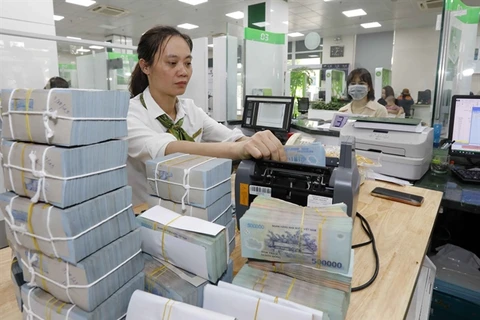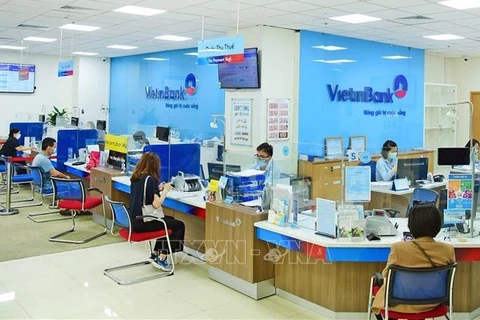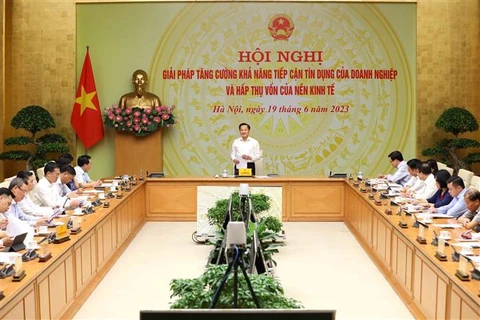 Total outstanding loans in the economy had reached some 12.32 quadrillion VND (over 523.9 billion USD) as of June 15. (Illustrative image: vneconomy.vn)
Total outstanding loans in the economy had reached some 12.32 quadrillion VND (over 523.9 billion USD) as of June 15. (Illustrative image: vneconomy.vn) The SBV set this year’s credit growth target for banks at 11%, but total outstanding loans in the economy had reached some 12.32 quadrillion VND (over 523.9 billion USD) as of June 15, increasing 3.36% from the end of 2022 – a relatively slow pace compared to previous years, Tu told a press briefing on June 21.
He pointed to both subjective and objective causes, noting that businesses have been struggling with difficulties due to the shortages of orders, disrupted money flows, and big unsold inventory, which have forced lay-offs at some companies.
Besides, soaring material prices, declined purchasing power in both domestic and foreign markets, and difficulties facing some sectors like real estate have added further complications, he went on.
In the first half of 2023, the SBV has reduced interest rates four straight times, by 0.5 - 2% per year. It has also continued to encourage credit institutions to minimise expenses to stabilise lending interest rates to aid businesses’ recovery and development.
Thanks to the measures taken so far, interest rates have basically become stable, with deposit and lending interest rates gradually reducing, Tu said, elaborating that deposit rates at commercial banks currently stand at around 5.8% per year while lending rates for Vietnamese dong loans about 8.9% per year, down 1% per year from the end of 2022.
The SBV has governed credit in an appropriate manner to help control inflation and support economic growth. For 2023, given the economic growth target of about 6.5% and the inflation ceiling limit of 4.5%, it aims at a credit growth rate of 14 - 15% which will also be aligned to the reality.
The central bank also wants to see high credit growth, but this target should not be achieved by lowering standards to pump money into the economy at all costs. Good credit growth needs to be accompanied by quality and effectiveness, which is a conundrum for the SBV, according to the Deputy Governor.
In the time ahead, the SBV will keep a close watch on the market, the domestic economy, and the global economy to flexibly take measures to retain inflation, stabilise the macro-economy as well as the monetary and foreign exchange markets, and control credit growth in line with the set orientations.
In addition, to improve people and businesses’ credit access and protect their rights and legitimate interests, it will also step up connecting banks with companies, order credit institutions to facilitate customers’ credit access, diversify banking products and services, and streamline lending procedures, he added./.
VNA

























